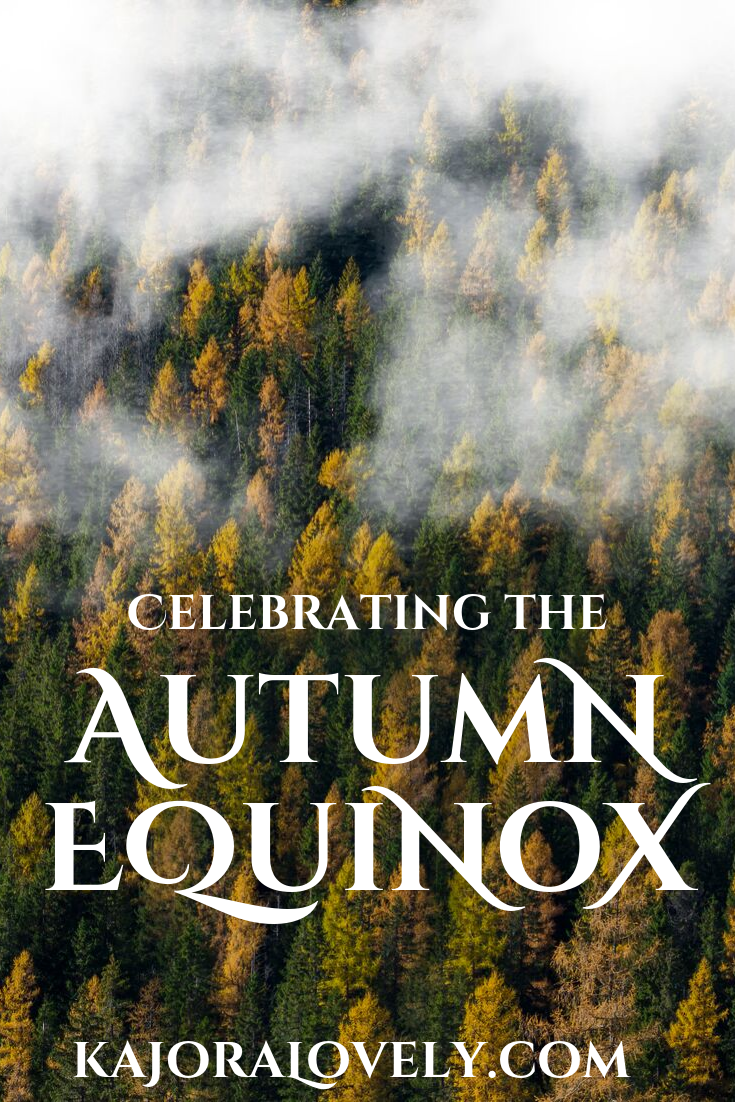The Autumn Equinox, or Mabon, has become a part of Neo-pagan celebrations, marking the first day of fall. It’s at this time that night and day are at a harmonious balance, with equal amounts of day and night.
Equinoxes mark balance and also a seasonal change. This time of year is good for spellwork and intention setting on issues related to balance, harmony, protection, wealth, and abundance.
The Autumn Equinox
The Autumn Equinox takes place on September 21 in the Northern Hemisphere and March 21 in the Southern Hemisphere. It marks the time when there are equal amounts of day and night. What’s significant about this time of year is that the days are getting shorter while the nights are getting longer. This will continue until we reach the Winter Solstice on December 21, when we experience the shortest day and longest night, after which the days will begin getting longer again.
Today we often refer to the Autumn Equinox as the first day of fall or autumn, and in present day culture it’s socially acceptable to begin decorating, dressing, and eating for fall. At least in America, Pumpkin Spice Lattes come out during the last few days of August and Halloween decor starts to hit stores by the first or second week of September.
Therefore, there are two things happening around this time: celebrating all things fall and noticing the balance of dark and light before we head into autumn and then winter. During this time of year, European pagans believed the increasing darkness meant that spirits were roaming the land.
It’s also a time for going inward and being introspective, focusing on the things we want to change within ourselves. To learn more, check out Kajora Lovely’s Autumn Equinox Tarot Reading that can help you achieve some balance in your life.
Autumn Equinox Food
Special ritual foods include apples, acorns, basil, beans, blackberries, corn, chicory, rose hips, parsley, poppy seeds, hawthorn berries, and nuts.
Since this holiday is considered a harvest festival, one way to celebrate is with a meal or feast. It’s a time of year when you can give thanks for what you’ve accomplished so far this year, and to take note of anything you initiated in previous weeks, months, or years that has come to fruition or is gaining momentum.
Even if there’s no specific milestone or occasion you’d like to mark, it’s a time when you can gather with people you love and give thanks for what you have. One way Wiccans honor and celebrate Mabon is by weaving a cornucopia as a symbol of abundance and wealth.
Herbs & Essential Oils
According to The Hearth Witch’s Compendium: Magical and Natural Living for Every Day by Anna Franklin, the herbs and essential oils that correspond to Mabon and the Autumn Equinox are:
Acorn - Alder - Apple - Ash - Basil - Barley - Bean - Benzoin - Blackberry - Buckwheat - Calendula - Cedar - Cedarwood - Chicory - Corn - Cornflower - Cypress - Daisy - Dog Rose - Elder - Frankincense - Hawthorn - Hazel - Ivy - Myrrh - Parsley - Pomegranates - Poppy - Rose - Smallage - Vine - Yew
Mabon
Today the Autumn Equinox is named after the Celtic god Mabon, whose name literally translates to “Son.” Mabon is a hunter spirit, and is also known as Young Man and The Boy.
According to Encyclopedia of Spirits: The Ultimate Guide to the Magic of Fairies, Genies, Demons, Ghosts, Gods & Goddesses by Judika Illes, Mabon is considered a divine child who was kidnapped on the third night of his life from his mother Modron, whose name literally translates to “Mother.” In the Welsh epic tale “Culhwch and Owen,” it is stated that Mabon was held captive in the Underworld, and he was discovered in Gloucester Castle by King Arthur and his cousin Culhwch. When Mabon was set free, he was the oldest creature on Earth, although he is also simultaneously considered to be the youngest of souls.
Mabon is believed to be associated with Maponus, who was worshipped in Britain and Gaul. The Romans associated Maponus with Apollo, and they practiced worship of him near Hadrian’s Wall. According to Illes, his name appears on ancient curse tablets.
The Origins of Mabon
While the Autumn Equinox is an event that occurs each year, the roots of the celebration of Mabon are unknown. What is known today as Neo-Paganism is part of a revitalist movement that began in the 1970s, and as part of that, the Equinoxes were celebrated as Ostara (the Vernal Equinox) and Mabon (the Autumn Equinox). Each of these events is named after a Celtic deity, but little is known about each of them.
We know from structures around the world, such as Stonehenge, that the Solstices were significant, and it is likely that the Equinoxes were, at the very least, noticed. While we have some celebrations today for these events, it’s not entirely clear if or how they were celebrated in pagan Europe.
However, with the increasing popularity of fall, Pumpkin Spice Lattes, and all things spooky, I think it makes sense to celebrate the Autumn Equinox today. Whether you refer to it as Mabon or the Autumn Equinox is up to you.
Mabon is presently referred to as the second and final harvest festival of the year. In regions further to the North, most crops would be harvested around this time, animals brought in from the fields, and people would be curing and storing their food to prepare for the colder months.
If you’d like some insight and guidance for finding your own sense of balance at this time of year, check out Kajora Lovely’s Autumn Equinox Tarot Reading.
RELATED BLOG POSTS
Autumn Equinox Tarot Reading with Kajora Lovely




